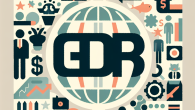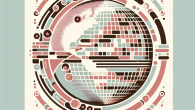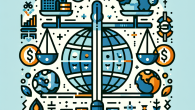
Analysing the Long-Term Impact of Brexit on the UK’s Financial Competitiveness
The Rise and Resilience of the U.S. Dollar in a Multipolar World
Ah, the almighty U.S. dollar—symbol of power, stability, and, occasionally, geopolitical headaches. But why does it continue to dominate in a world increasingly defined by multiple centers of economic gravity? Is its reign under threat? Or are reports of its demise, as Mark Twain once quipped, greatly exaggerated?
In today’s global economy, one must consider not just economic fundamentals, but a complex interplay of trust, infrastructure, political alignment, and market behavior. Strap in, dear readers. Today, we take a deep-dive into the greenback’s continued dominance and its ability to weather an evolving global macroeconomic order.
A Brief History: How the Dollar Became King
To understand the dollar’s current standing, one must first revisit its journey to preeminence. The Bretton Woods Agreement of 1944 effectively crowned the dollar as the cornerstone of international finance. Pegged to gold, it offered stability in a world recovering from war and economic depression. Though the gold standard was abandoned in 1971, the infrastructure, trust, and sheer inertia surrounding the dollar endured.
Today, nearly 60% of global foreign exchange reserves are held in U.S. dollars. It’s used in approximately 88% of all FX transactions, and trades in commodities like oil and gold predominantly still occur in USD. In short, the dollar is more than a currency—it’s a hegemon wrapped in green paper.
Why the Dollar Endures
1. Deep and Liquid Capital Markets
A primary factor in the dollar’s staying power is the unparalleled depth and liquidity of U.S. financial markets. The United States boasts the largest and most transparent bond and equity markets in the world. This provides foreign investors with confidence, accessibility, and a surplus of dollar-denominated assets.
2. Trust in U.S. Institutions
Whether one agrees with U.S. politics or not is beside the point; investors believe in the institutional stability of the U.S. system. From the Federal Reserve’s independence to well-functioning legal mechanisms, these structures reinforce confidence in the dollar as a safe-haven asset—even in the most turbulent of times.
3. Dollar-Denominated Debt
An estimated $13 trillion in global debt is denominated in U.S. dollars. That means governments and corporate entities around the world have obligations to pay back in USD, creating constant demand for the currency. Quite the clever feedback loop, no?
The Emerging Multipolar Threat
Still, we mustn’t overlook the rising aspirations of others. China, the EU, and several BRICS nations have grown increasingly vocal about challenging the dollar’s supremacy. But is their bark worse than their bite?
China’s Renminbi (RMB)
China has made concerted efforts to internationalize the yuan. Initiatives like the Cross-Border Interbank Payment System (CIPS) and trade deals denominated in RMB signal intent. Yet, fundamental issues such as capital controls, lack of transparency, and limited convertibility still handicap its potential.
The Euro’s Unrealized Potential
At one point, the euro appeared poised to rival the dollar. And yet? Structural challenges—think sovereign debt crises, banking instability, and political fragmentation—have persistently undermined its global standing. The euro remains a regional power, but a fragmented one.
BRICS and Alternative Settlements
The BRICS bloc (Brazil, Russia, India, China, South Africa—and now possibly others) has flirted with the idea of a shared currency or bypassing the dollar in trade. Some transactions are increasingly settled in local currencies, particularly between Russia and China. However, a lack of unified financial infrastructure and occasionally conflicting geopolitical interests render such discussions largely aspirational—for now.
What Could Actually Shake the Dollar?
If history teaches us anything, it’s that hegemony rarely lasts forever. While the dollar rests on robust foundations, there are emerging cracks and potential triggers we must monitor:
- U.S. Fiscal Recklessness: Mounting debt levels and persistent deficits could erode confidence in the long-term value of the dollar.
- Weaponization of Finance: The use of sanctions and SWIFT bans breeds resentment and motivates diversification away from the dollar among adversarial nations.
- Digital Currencies: Whether through Central Bank Digital Currencies (CBDCs) or decentralized finance protocols, new modalities of money are challenging traditional gatekeepers.
The Role of the Federal Reserve
The Federal Reserve’s decisions echo globally. Rising interest rates attract capital inflows, appreciating the dollar and tightening financial conditions worldwide. Conversely, dovish stances can weaken the greenback but stimulate global liquidity. This asymmetrical power adds another layer of complexity to the dollar’s dominance.
Importantly, when crisis hits—be it financial meltdowns, pandemics, or geopolitical tensions—the world still runs to the dollar and U.S. Treasury bonds. That’s not just about money—it’s about trust.
Are We Entering a Post-Dollar World?
Short answer? Not yet. Long answer? It depends on how the U.S. manages its fiscal house, geopolitical relations, and the evolution of financial technologies. A multipolar currency world may eventually arise, but currency dominance doesn’t shift overnight. History shows us these are evolutionary, not revolutionary, transitions.
More likely is a scenario where we see increased regionalization of reserve strategies. The dollar might lose a few percentage points of its ultimate dominance, but still remain the go-to reserve and trade currency for decades to come.
Conclusion: Don’t Bet Against the Greenback—Yet
In the realm of global macroeconomics, the U.S. dollar remains the sun around which the financial planets orbit. While new solar systems are under construction—courtesy of Beijing, Brussels, and Brasilia—the old one keeps churning out sunshine and interest payments.
Prudent investors and policymakers should be aware of the shifting tectonic plates beneath global currency dominance. But for now, the verdict remains: In Dollar We Trust.
Curious about the forces shaping global finance? Visit our About Us page to learn more about our mission and expertise. Have a question or want to collaborate? Contact us here.









Leave a Reply